When choosing materials for your latest hardscape project, do you pass right over natural stone because you think it’s:
- Too pricey
- Won’t hold up over time
- More difficult to maintain than concrete?
What if we told you the answer was D: None of the above?
Surprised? Well, sometimes we just take what we hear — like, wait an hour after a meal to swim — as gospel and don’t really dig into the facts (because, are we really going to sink after eating a turkey sandwich?)
In actuality, natural stone is not only a nice looking material that can be used in countless ways in a landscape design, but it’s going to stand the test of time and maybe even make you some money, to boot.
So, let’s dig into the seven biggest myths about natural stone:
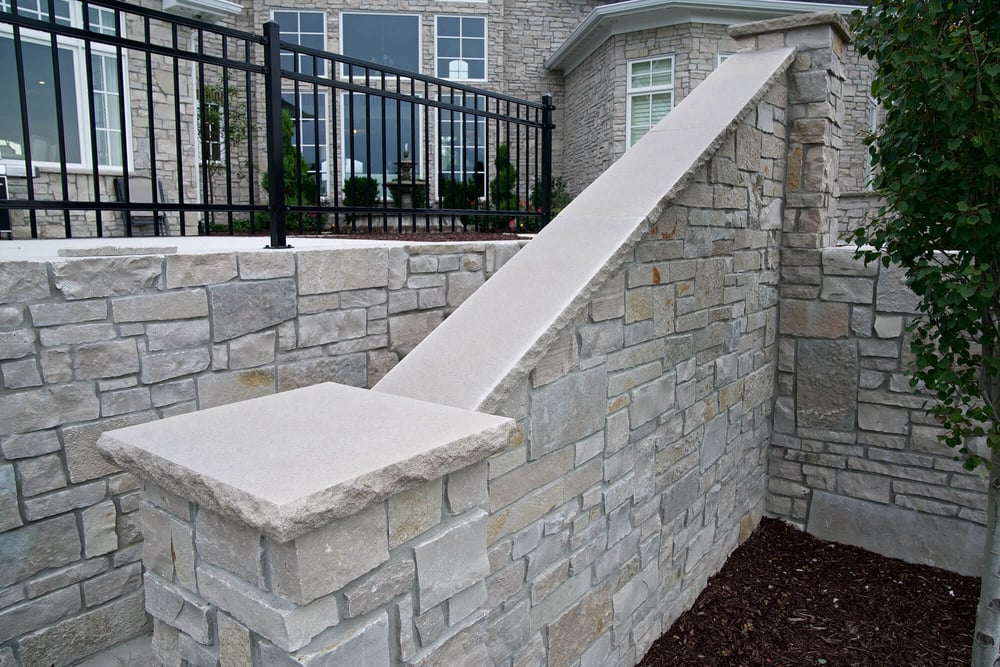
Pillar and wall caps in INDIANA LIMESTONE-FULL COLOR BLEND™.
Myth 1 The cost of natural stone is just too high
One of the biggest fallacies surrounding Indiana limestone and granite is that they're much more expensive than concrete products.
“A lot of times, in contractors’ minds, natural stone is always more in price than the highest concrete paver that they sell,” says Hardscape Nate.
The truth is, according to Hardscape Nate, high end materials like Techo-Bloc Borealis, which mimic wood planking, are about $12-$14 square foot for the contractor. He says in Chicago, for instance, a contractor could buy Indiana Limestone from him for about $9-$10 square foot. “It’s not far off from the middle of the road stuff the concrete manufacturers offer, either.”
“But you still aren’t comparing apples to apples,” says Nate. “You’re comparing two very different products, a concrete paver and one made of granite or limestone. It’s not just the price but the value that it’s going to bring to the project, from aesthetics to durability.”
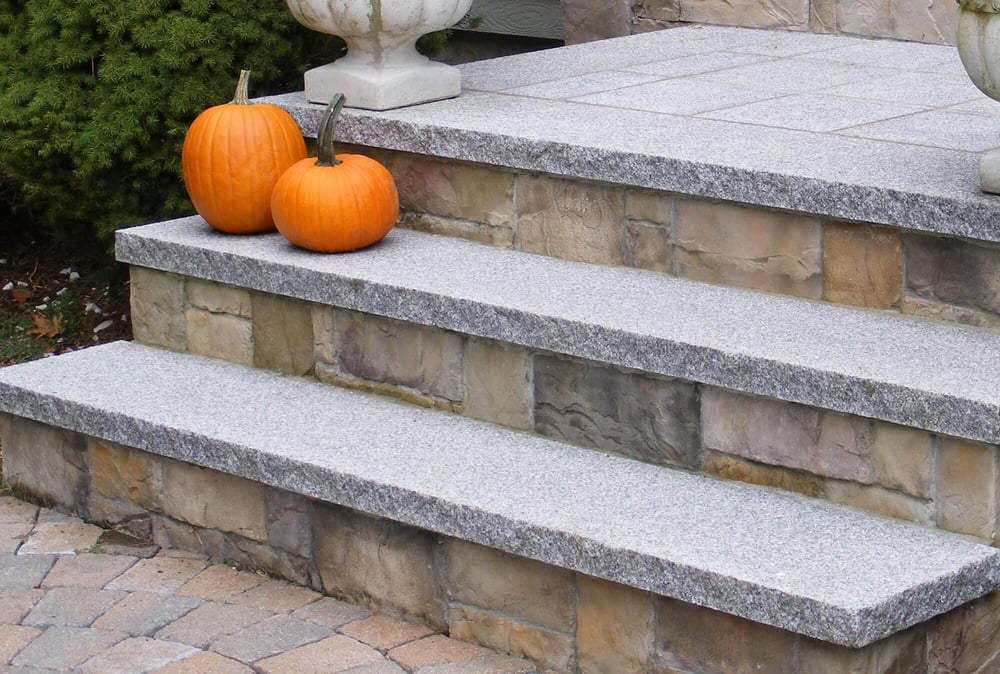
Myth 2 It’s too weak to stand up to summer barbecues
The Biltmore Estate. Empire State Building. The Pentagon. What do all of these great American structures have in common? You guessed it: they’re made of limestone. So, why does the nation’s building block get such a bad rap in the construction community?
Hardscape Nate laughs and says he’s never understood why Indiana limestone, which meets all the same standards for density, absorption rates and freeze-thaw durability as concrete materials, is believed to be too soft to use for landscape projects. And when it comes to fading, Indiana Limestone is a natural stone and the same all the way through, unlike manufactured building products. As for chipping, Indiana limestone is much less susceptible to the chipping and flaking common to bluestone when water within the stone expands during freeze-thaw cycles.
“The world’s most ancient monuments — like the Great Pyramid and Roman Colosseum — were built out of limestone,” he says. “I think it’s strong enough to withstand a barbecue or two as a patio paver.”
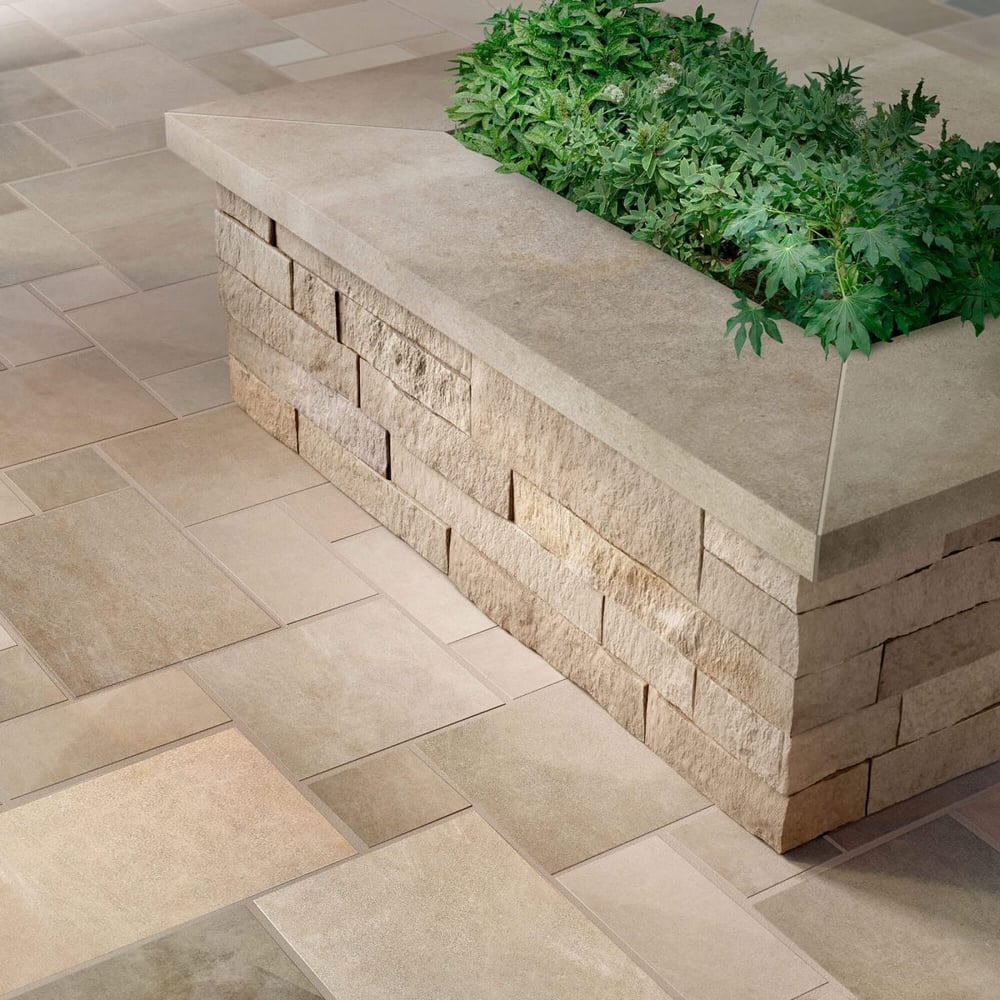
Pavers, garden wall and wall caps in INDIANA LIMESTONE-FULL COLOR BLEND™.
Myth 3 Limestone is a stain magnet
Think the porous nature of Indiana limestone makes it more susceptible to staining and harder to maintain? Think again.
If treated with a breathable sealer, just the way concrete pavers get treated, Indiana limestone can stand up to everyday mishaps, like rust and grease from a grill, wine or ketchup from a party or tire marks on a driveway. “It’s not going to prevent the stain, but you can make cleaning it up much easier, since it won’t penetrate into the stone.”
And cleaning is easy, using an environmentally friendly degreaser like Dawn dish soap and a light pressure washer can take care of 99 percent of all stains that occur on limestone.
No harsh chemicals or acids are needed, which is not only good for a landscaping crew, but beneficial to turf and ornamentals around the house.
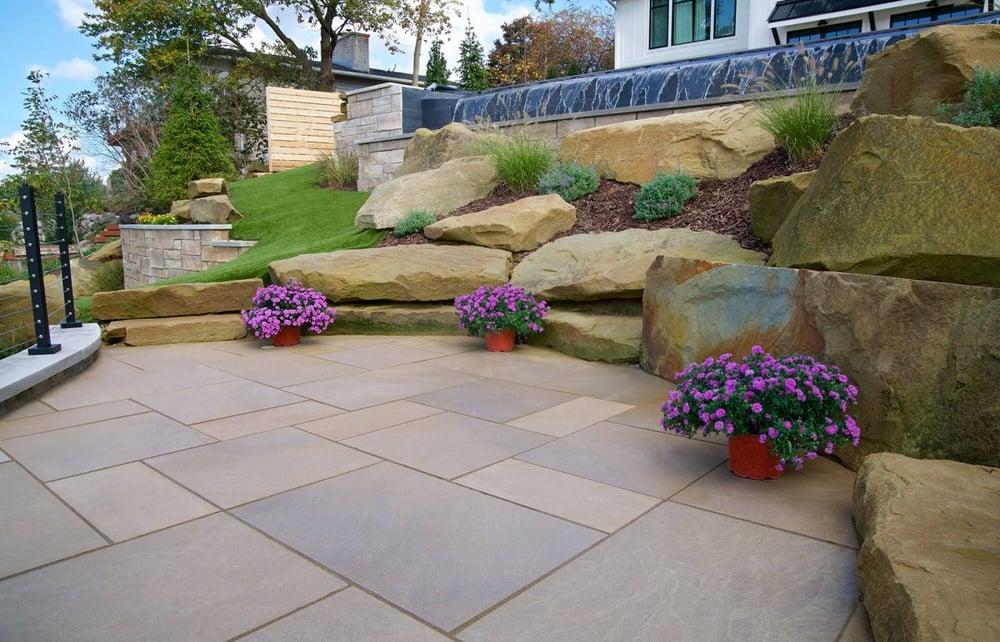
INDIANA LIMESTONE - FULL COLOR BLEND™ slab pavers.
Myth 4 Installation is a time suck
Sure, the Indiana Limestone Institute (ILI) recommends that product be damp proofed prior to installation to prevent mineral wicking, and who wants that hassle?
Here’s the thing, says Hardscape Nate: if you use proper gradation of aggregate, just the way you’d build an asphalt highway, you don’t need to go through that time consuming process. “Moisture is bad for any product,” he says.
Also, the ILI has not updated its recommendations in decades, and still cautions against using sealers on the stone, which we know is the key to preventing staining.
“If installed with proper materials, it’s the same as any other landscape material,” Nate says, who points out that when installing large scale pieces and more square footage, it’s easier to install with smaller crews using today’s technology.
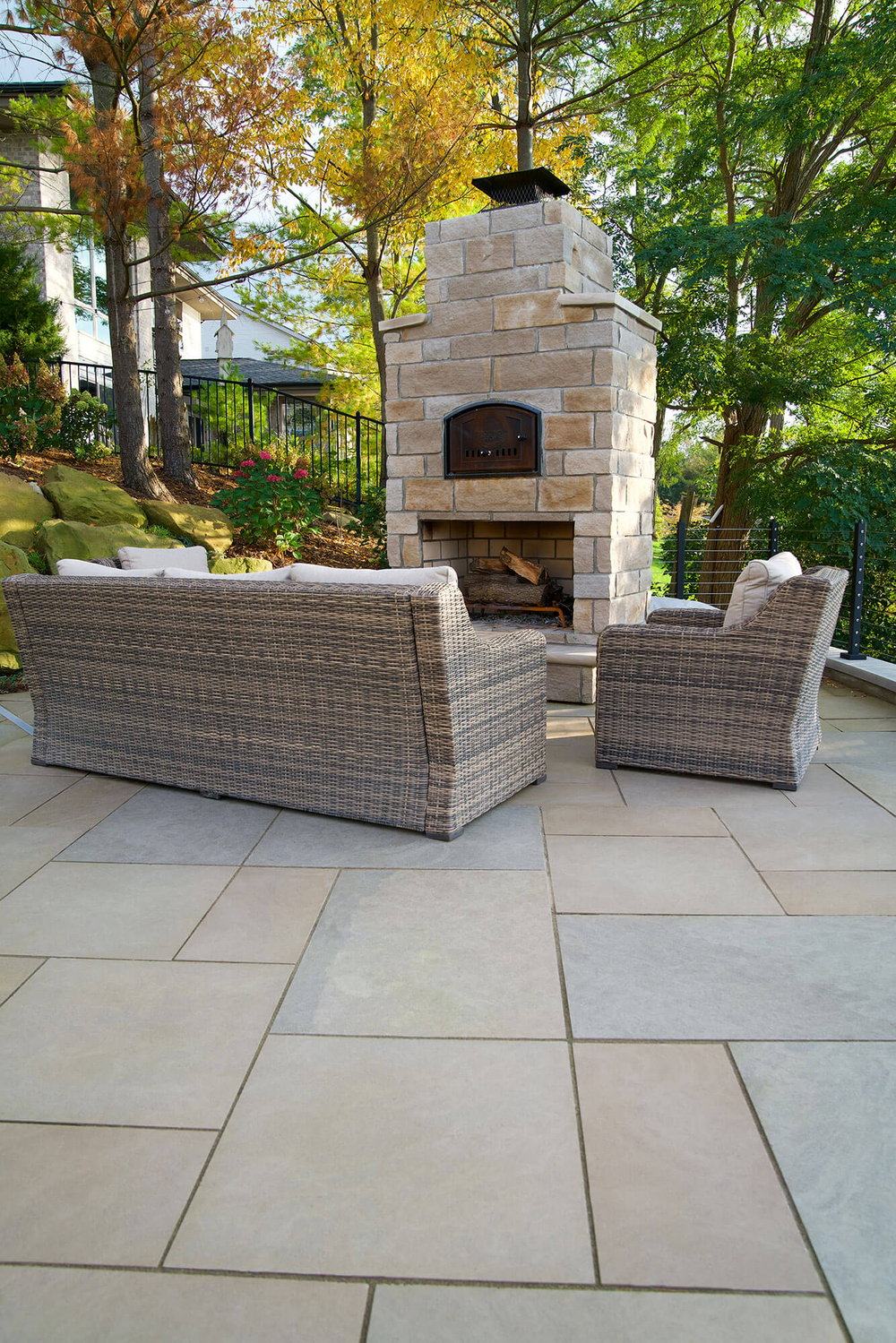 INDIANA LIMESTONE - FULL COLOR BLEND™ slab pavers.
INDIANA LIMESTONE - FULL COLOR BLEND™ slab pavers.
Myth 5 Limestone is a one-trick-pony in landscape design
While Indiana limestone is normally associated with caps and wall coping in landscape designs, it’s the ideal material to use throughout a hardscape, like on steps and treads, patios and pool decks and columns.
“It’s the white shirt of landscape design,” says Hardscape Nate. Limestone’s naturally muted tones and textures work in a variety of applications and with other building materials.
And as a paver for a pool deck or patio, Indiana limestone is a family-friendly material. Its smooth surface provides an easy walking surface for young children and older adults. The lighter color tones have a low SRI (Solar Reflective Index) value, so it’s not really absorbing the heat and is friendly to barefooted guests on areas that aren’t protected from the sun.
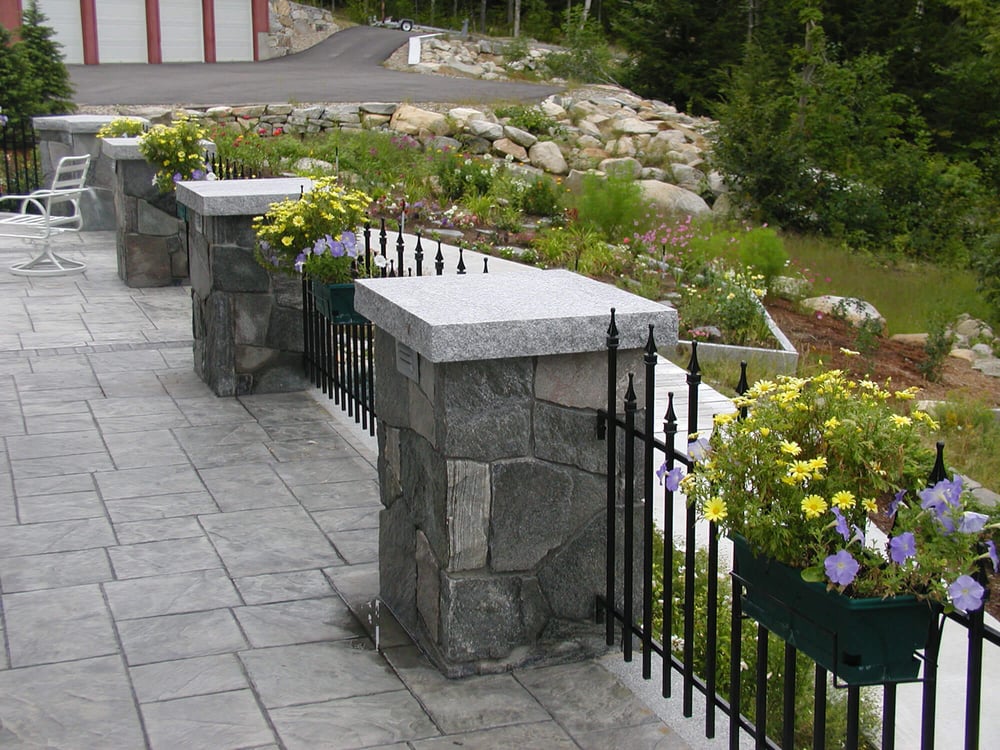
WOODBURY GRAY™ granite pillar caps
Myth 6 Installation is like putting together a puzzle
Unlike natural stone products like bluestone or flagstone, where the range in thickness can vary up to ¾ of an inch, Polycor Indiana limestone and granite are produced to be much more uniform for easier installation, with only 1/16 of an inch tolerance in heights.
“That’s a big deal, because you need to adjust every piece when working with other stones,” Hardscape Nate said. “But with the limestone, you just screed the base like a manufactured concrete product and lay it, and the tolerance is there.”
“It’s not special order and it’s not more money,” he adds.
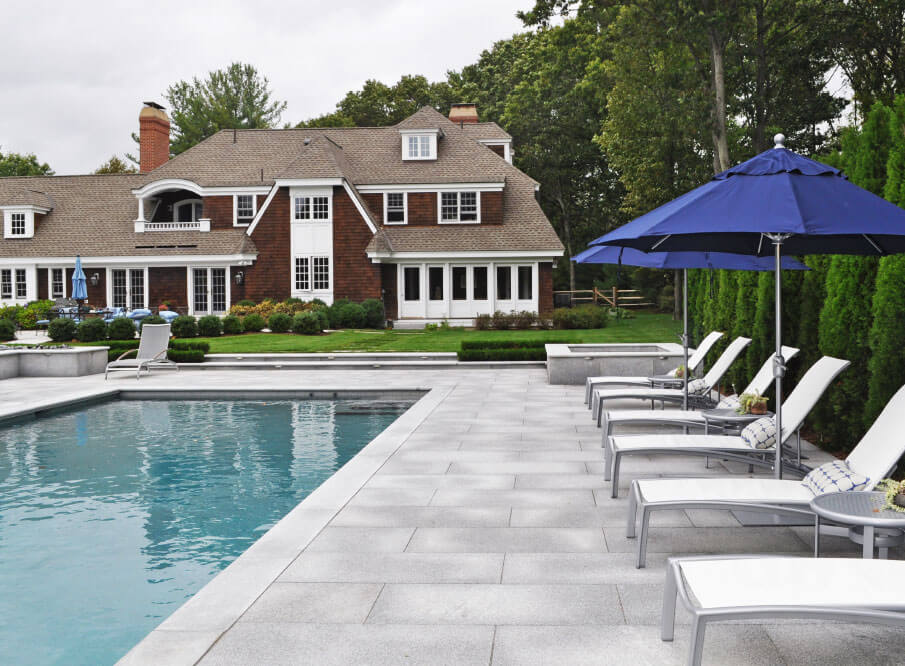 WOODBURY GRAY™ granite pavers and pool coping.
WOODBURY GRAY™ granite pavers and pool coping.
Myth 7 Folks want what their neighbors have
“That’s just a straight up myth,” says Hardscape Nate. “A lot of times, customers want an outdoor living space like their neighbors, but not necessarily made out of the same materials. In fact, most homeowners don’t really differentiate between manufactured and natural hardscape materials at first.”
Here’s an opportunity to make your design stand out from the rest of the crowd and make the project less about price, since you’re not proposing using the exact same concrete materials as all the other contractors.
“If you give them the outdoor living space that they want using different materials, you’re going to set your design apart from the rest, and probably make more money,” he says. Homeowners can see the tone and texture natural stone brings to the project and often find ways to make their budget work to include those materials in the design. “It’s not necessarily about being utilitarian any more,” Nate said. “It’s not just about whether the space is usable, homeowners want their living spaces to stand out.”
Why make something out of dyes and manufactured materials when you can have something natural, sustainable and readily available? It is after all, rock, and what could be more fitting in an outdoor project. Now that you know the facts about how natural stone works in outdoor applications, get a sample for your next project.
Add natural stone to your next project. Get a sample of granite or Indiana limestone. Free to the trade.

